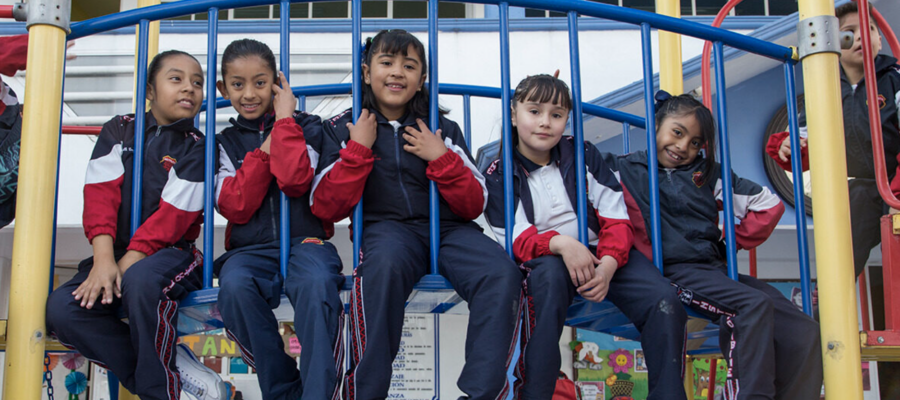Social and Emotional Learning (SEL) is a complex topic for educators around the world – and it can be difficult to know what activities are relevant and age-appropriate, particularly when your students are older than Very Young Learners. The good news for teachers is that there are many things we already do that give us opportunities to develop our students’ SEL skills. CASEL (Collaborative for Academic, Social and Emotional Learning) highlights three main ways in which Social and Emotional Learning is ideally integrated into the classroom1:
- The atmosphere and environment within our school and our classroom. Having a supportive classroom climate, where students feel emotionally safe, part of a community, motivated and challenged, forms the basis of social and emotional learning. This type of classroom creates a strong foundation for students to engage fully and take academic risks.
- Giving students opportunities to practice social and emotional competencies as part of their education. Students learning to understand other people’s perspectives, developing a growth mindset, doing pair and group activities, and working on their communication skills, are all taking part in social and emotional learning.
- Explicit Social and Emotional Learning activities, which help students learn about, practice and develop these competencies in ways that are developmentally and culturally appropriate.
So what are some practical ways we can use this in our school and in our classrooms?
SEL in the Classroom Environment
Building a sense of safety and community in our classrooms forms a solid foundation for our students’ Social and Emotional Learning. This might look like:
- Learning about our students – their likes, dislikes, strengths and weaknesses. We can then use this knowledge to inform the activities we choose and the way that we teach.
- Encouraging our students to take pride in their work and feel a sense of ownership over the physical classroom space by displaying their work on the walls.
- Implementing shared routines and activities to give our students a sense of belonging to a community and help with classroom management.
- Giving our students roles and responsibilities within the class, for example handing out worksheets or making sure the board is cleaned.
- Including students in classroom discipline and decision making, for example by making a class behaviour contract.
SEL in Academic Instruction
We can tailor the content that we teach to provide opportunities for students to practice social and emotional competencies.
Using coursebooks based around real-world content introduces our young learners to the world around them. We can show them different people, places and cultures, and help them understand the role that our experience and our culture has in forming our identity. National Geographic Learning programs are well suited to this task given their focus on authentic photography, texts, and videos from around the world.
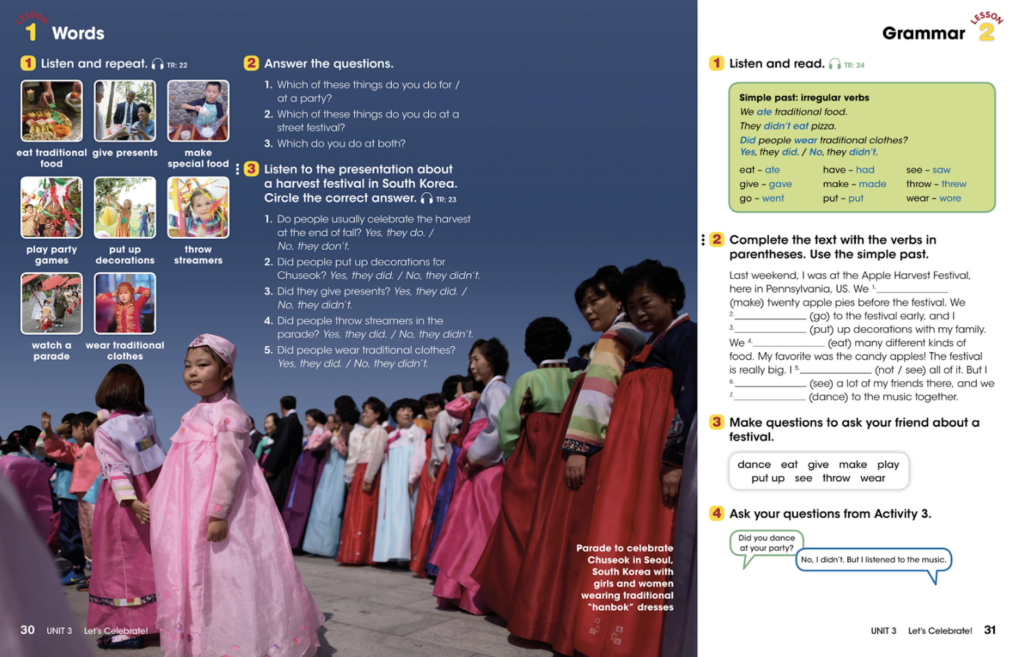
Even if our course materials do not naturally feature global content, we can focus our lessons on topics that have similarities across different cultures, such as food, school or family, and show our learners that much as they may be different to children in other countries, in many ways they are the same. As we help students to understand how their own culture and background shapes their view of the world, and guide them to examine any prejudices they may have about people who look and act differently to them, they develop self-awareness and social awareness.
In addition to the content we teach, how we teach and the types of activities that we prioritise also give us opportunities to integrate Social and Emotional Learning into our classrooms. We can:
- Develop students’ social awareness and communication skills through group and pair work.
- Focus on games and activities that help learners find common ground and build trust — for example, activities where they need to come to an agreement as a group.
- Help our students develop their verbal and non-verbal communication skills, for example by teaching them how to be good listeners.
- Offer students choice where appropriate, taking into account their age and abilities. This could be whether they work in groups or on their own, how they choose to present their work (an oral presentation? A poster? A short video?), or the chance to choose their own topic for a project. Projects also motivate students to tackle relevant, real-world topics and make connections to the outside world – for example, a project may include tasks that learners can do at home, or a way in which they can impact their wider community.
- Assign project work. Project based learning offers plenty of opportunities for students to make choices about how they will work, as well as allowing them to develop their critical thinking skills and enabling them to fully exploit their curiosity in exploring a topic. Projects also motivate students to tackle relevant, real-world topics and make connections to the outside world – for example, a project may include tasks that learners can do at home, or a way in which they can impact their wider community.
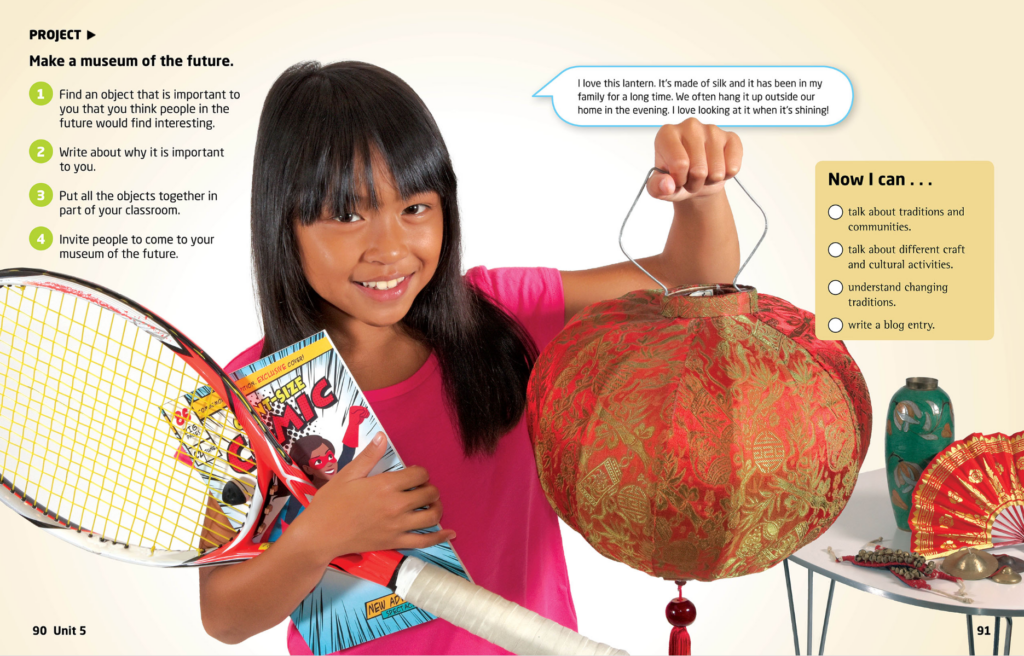
- Use self-assessment techniques, such as exit tickets. These help our learners develop a greater understanding of their strengths and weaknesses and build self-esteem. Even with young or low-level learners, we can use a traffic light system to encourage them to assess their input in the project and the work they’ve done – green for ‘good’, yellow or orange for ‘ok’, and red for ‘needs more work’. This could be done as a ‘blind’ hands up.
Explicit SEL in the English Language Classroom
Teaching English through content means that we can explore SEL through texts which reference other subject areas such as health education and science. For teenagers, for example, we can include texts about the human brain, how it works, and how it grows and develops. This will help them to understand some of what is happening behind different emotions and learn how to manage their emotions better.
For younger learners, we might want to explore topics such as sleep, why it’s important, and how to get good quality sleep, or different ways to manage emotions and perform well at school.
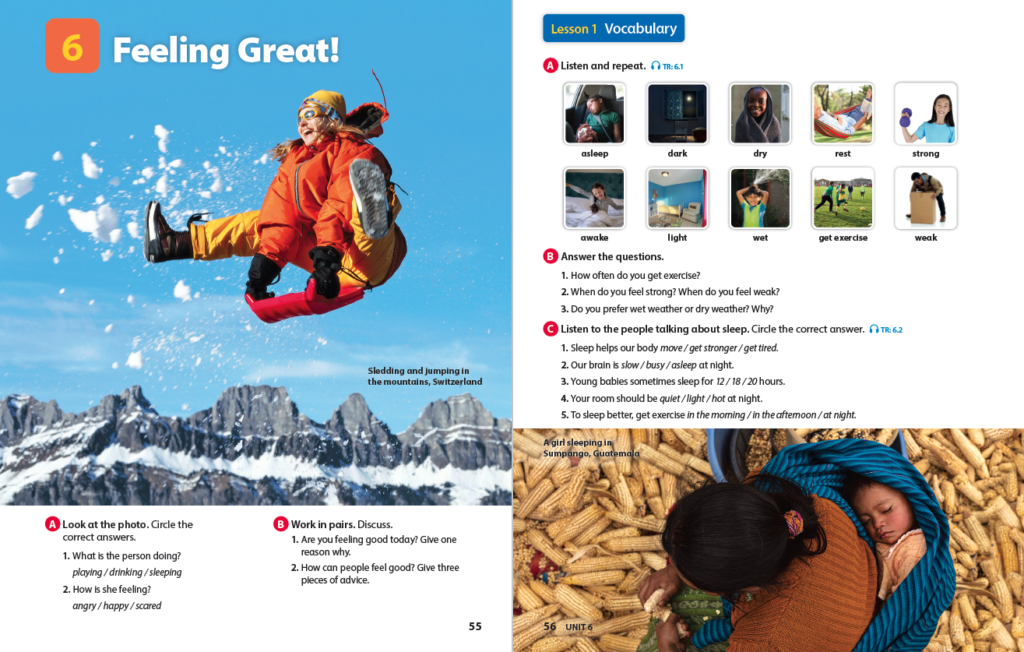
We can also feature SEL more explicitly in the language and vocabulary we teach. For low level or younger learners, this might look like teaching the names of different emotions and encouraging students to recognise and name how they’re feeling – such as in circle time at the beginning of the lesson.
For older learners we might choose to add in vocabulary such as ‘growth mindset’ or ‘self-esteem’, such as in a unit where learners talk about setting challenges, or if we use ‘can do’ statements to assess students’ progress at the beginning or end of a unit.
In this example from the Imagine series, learners think about their personality traits… and reflect on the fact that they aren’t necessarily the same now as they were when they were younger!
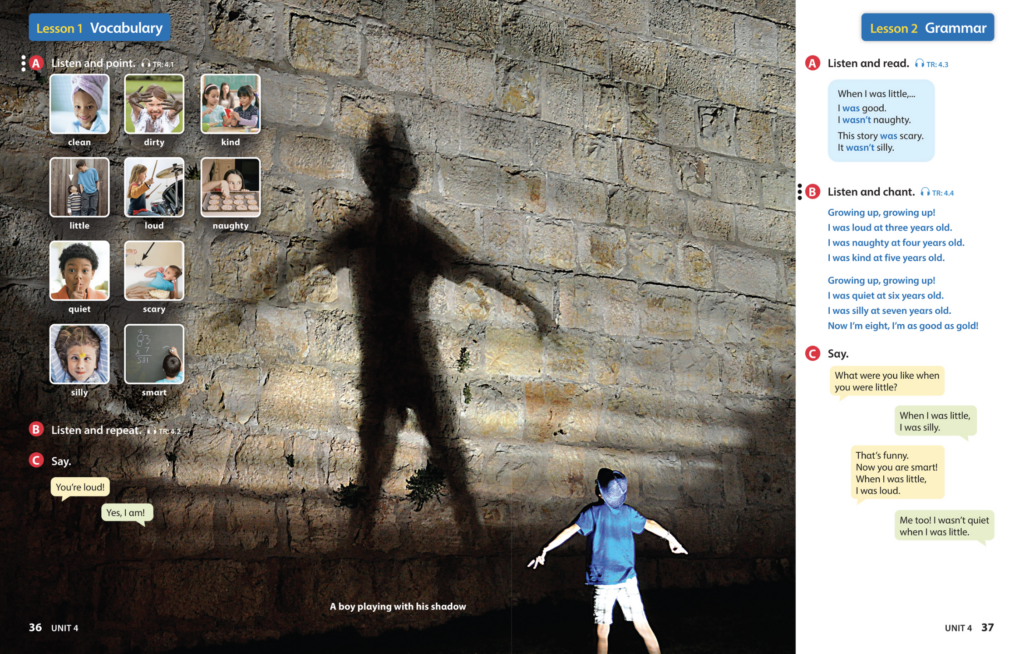
Finally, Values education gives us the opportunity to further discuss and build upon our students’ SEL skills in our classes, for example by focusing on the on the importance of being yourself (self-awareness), sharing and being responsible (social awareness, making good decisions), and being accepting of differences (social awareness).
Whether this post has reminded you of something you already do with your learners or inspired you to try something new, we hope we have given you some practical ideas for implementing Social and Emotional Learning in your classroom. Will you try any of these ideas with your students? Let us know in the comments!
Prepare your learners with the skills to succeed in English and in life with our Young Learner programs: Imagine, Look, and Our World, Second Edition!
References:
1 https://schoolguide.casel.org/focus-area-3/classroom/


